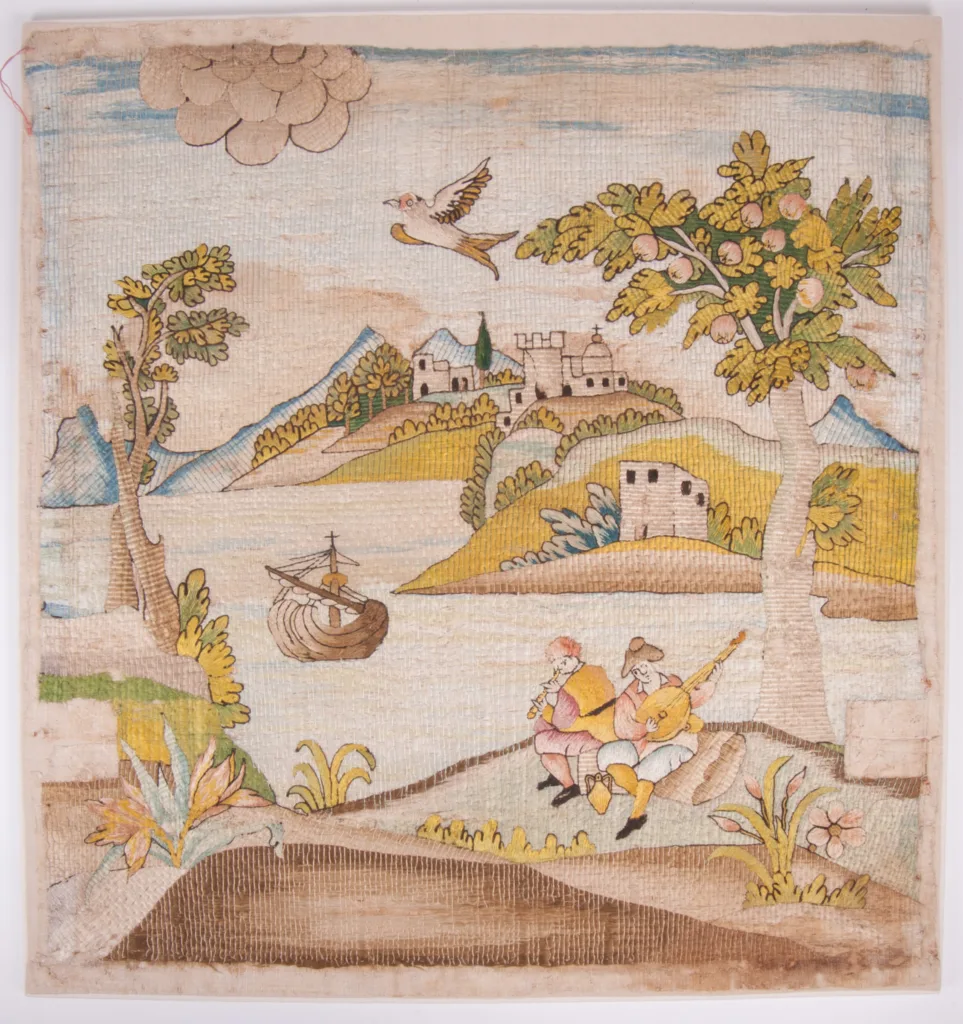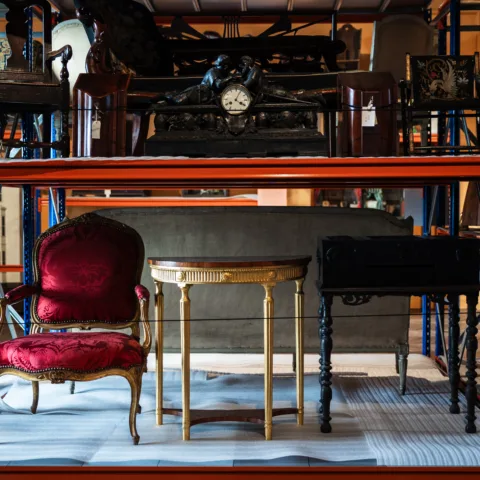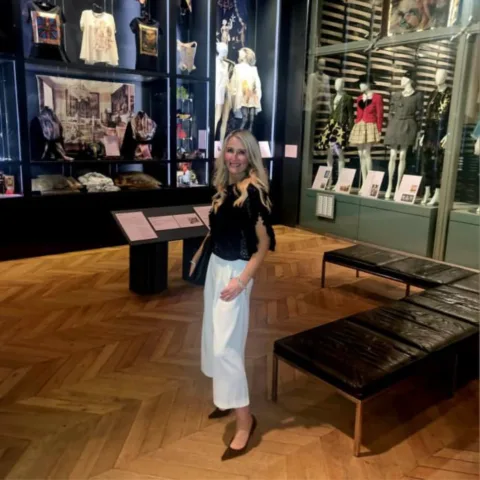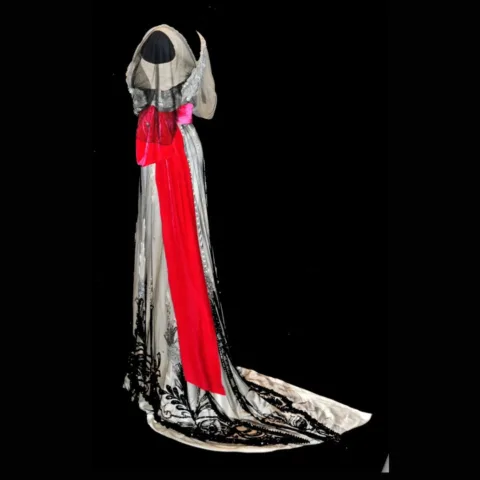The Bowes Museum Blog

What Lies Beneath (The Embroidery): an epic 2-part textile conservation horror story… with a happy ending!

Jamie Robinson:
Some conservation projects take many months (or even years) to complete, involving a number of stages and a number of people, before finally making it to display. This was the case for one such embroidered seat cover, the majority of which had been conserved by my predecessor, María Pardos, during her internship last year, and drawn to a close by myself. The embroidery is thought to date to the early-to-mid 18th century. Margaret Swain writes in her book Embroidered Georgian Pictures that, ‘The taste for biblical scenes that had so absorbed the workers of the seventeenth century was replaced by a passion for the pastoral,’ while Xanthe Brooke reinforces this thematic move, stating that, ‘Throughout the first half of the eighteenth century pastoral, Arcadian and bucolic themes were preferred, sometimes with a hint of the classical in the form of ruinous architecture.’[1][2]
This sweet scene of two musicians set within an idealised landscape is thought to be European, possibly Portuguese, although its origin is still in debate; the fashion for embroidered upholstery depicting gentle scenes of figures set within nature was widely adopted. It has since been through a number of incarnations, for while the unembroidered squares to either side would suggest that it was originally intended for a seat back, by the time it was purchased by John and Josephine Bowes in the 19th century it had already been converted into a wall hanging, complete with linen backing and metal hanging rings.

Squares at either side with no embroidery, to accommodate chair arms
The embroidery is part of the Founder’s Collection, an exciting example of an unusual technique and its adaptation evidence of a changing market for embroideries in the 19th century – from the functional to the decorative. While alarming in its initial assessment condition, it was an excellent candidate for conservation.
Maria Pardos:
I discovered the embroidered seat cover inside a box while repacking part of the museum’s embroidery collection. The poor condition and singularity of the object made it an irresistibly challenging conservation project.

Embroidery before conservation [EMB.162]
The lining was also in poor condition; stained, discoloured and with several areas of loss. All elements used to transform the seat cover into a decorative panel: lining, webbing bands and metal rings, seemed to be recent additions. After discussion with the curatorial department, it was agreed to separate the embroidery from the other elements. These were not conserved but kept, labelled and stored within the same box to prevent dissociation.

Maria removing the lining to reveal a mass of embrittled adhesive
On separation of the embroidery and the lining it was discovered that both layers had been glued together, so in addition to the adhesive stains visible from the front, an extensive layer of thick, brittle adhesive was also coating the back of the object, rendering the fragile object vulnerable to hygroscopic changes. Its removal was necessary; a long tricky job solved by applying blotting paper, dampened in de-ionised water, to the reverse, until the adhesive was soft enough to mechanically scrape off with a small metal spatula.

Application of damp blotting paper, to soften the old adhesive

Mechanically removing softened adhesive
The creases and distortions were eased using ultrasonic humidification. The grain of the ground fabric and loose threads were also realigned and held in place with etymological pins and weights.

Re-aligning threads, using weights and pins
The fragility of the object required a full support and therefore the damaged areas were secured with laid-couching stitching using Gütermann Mara 220 polyester threads to a linen fabric, dyed in the studio tocolour match.
The conservation of the embroidery became a long term project. Despite my good intentions, a very busy internship year at the Bowes, and an early departure to start my new job at the National Maritime Museum, it was impossible for me to complete it, leaving the embroidery half way through the stitching process.
Jamie Robinson:
Keen to gain some further stitching experience, if a little daunted at the prospect of completing such a labour of love, I took up the embroidery conservation challenge last month. María had completed much of the structural stitched support, leaving me the gratifying task of cosmetic thread realignment. Each unruly silk was tweezed back into position and re-couched with Gütermann Mara 220 polyester threads. The black threads outlining the design were in particularly poor condition; a common problem often noted in darker hues where the iron mordant, used to set the dye, has caused the fibres to degrade.

Jamie couching loose threads into place

Detail: broken and brittle black outline threads, before and after conservation
Support edges were turned and the embroidery was stitched under minimal tension onto a custom-made padded board, fabricated to the object’s exact dimensions (consistent with the mounting of other flat textiles in the Fashion and Textile Gallery).

Tensioning the embroidery onto the padded board, held in place with pins
Not wanting any historical evidence to go astray I made a double layer Correx® box to hold the embroidery and lining together. The piece can sit quite happily in there, ready mounted until it is required for display in the future. It would perhaps be difficult to justify the 200+ hours, and two textile conservators that it took to treat this object, were it not designated as a good training opportunity for ICON interns. However, the end result is such a satisfying improvement that the embroidery has now been selected for future display in the Fashion & Textile Gallery.

After conservation: in a custom-made correx box

After conservation [EMB.162]
By Maria Pardos (ICON Intern 2014-15) and Jamie Robinson (ICON Intern 2015-2016)
[1] Margaret Swain, Embroidered Georgian Pictures (Oxford: Shire Publications Ltd., 1994), 7.
[2] Xanthe Brooke, The Lady Lever Art Gallery Catalogue of Embroideries (Gloucestershire: Alan Sutton Publishing Ltd., 1992), 94.







